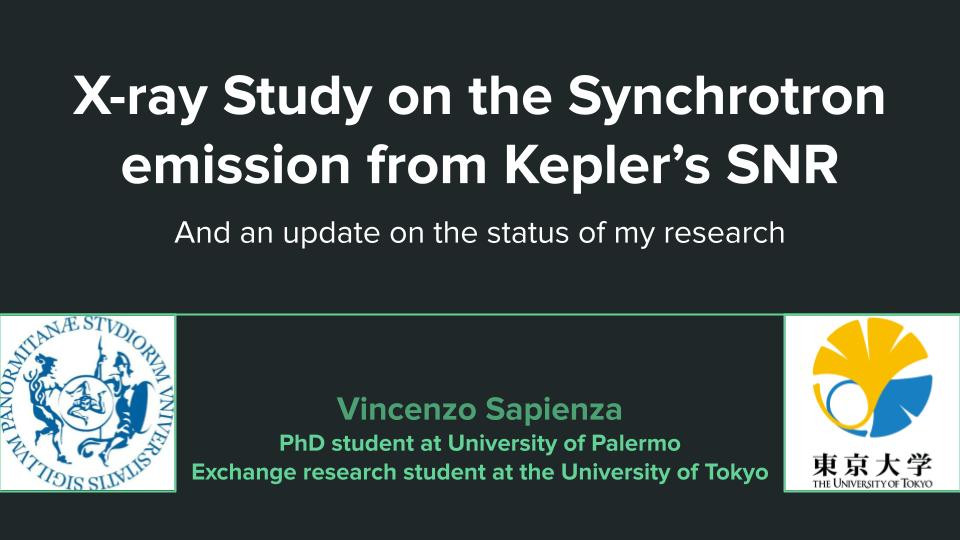ABBL-iTHEMS Joint Astro Seminar by Mr. Vincenzo Sapienza on May 19, 2023
Synchrotron X-ray emission in young supernova remnants (SNRs) is a powerful diagnostic tool to study the population of high energy electrons accelerated at the shock front. Mr. Sapienza and his collaborators performed a spatially resolved spectral analysis of the young Kepler's SNR, where they identify two different regimes of particle acceleration. In the north, where the shock interacts with a dense circumstellar medium (CSM), they found a more efficient acceleration than in the south, where the shock velocity is higher and there are no signs of shock interaction with dense CSM.
They also studied the temporal evolution of the synchrotron flux, from 2006 to 2014. A number of regions show a steady synchrotron flux and equal cooling and acceleration times. However, they found some regions where they measured a significant decrease in flux from 2006 to 2014. Our results display a coherent picture of the different regimes of electron acceleration observed in Kepler's SNR. Also Mr. Sapienza presented some preliminary results on the SN 1987A project.
Reported by Shigehiro Nagataki

